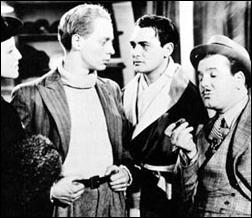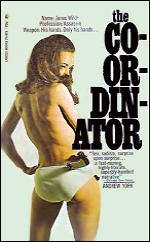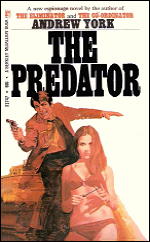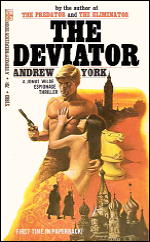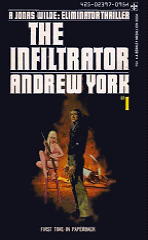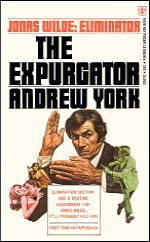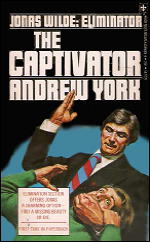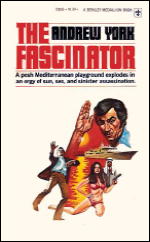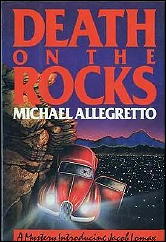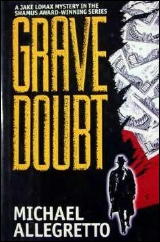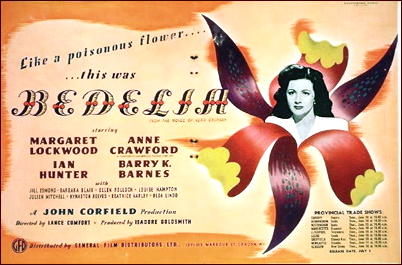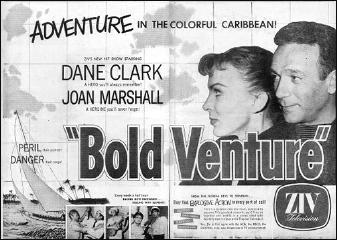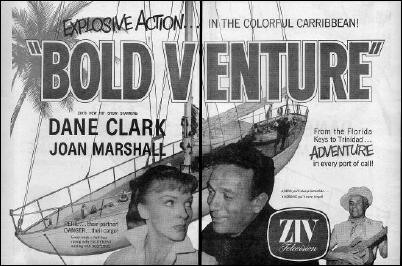February 2012
Monthly Archive
Sat 25 Feb 2012
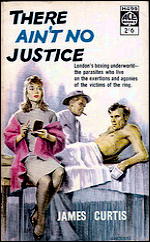
THERE AIN’T NO JUSTICE. Associated British Films, 1939. Jimmy Hanley, Edward Rigby, Mary Clare, Phyllis Stanley, Edward Chapman, Jill Furse, Richard Ainley, Michael Wilding, Nan Hopkins. Screenplay: James Curtis, based on his own novel. Director: Pen Tennyson.
I don’t watch boxing movies, not even if they’re nominated for Oscars or other awards, or even if they win. That has nothing to do with boxing, per se. I don’t watch sports movies of any kind. Well, maybe baseball, but that’s because I like baseball.

Call it prejudice if you want, but it has nothing to do with sports movies. I don’t read sports fiction either, not even baseball. There’s nothing the screenwriter of a sports movie can make up that can match (ever) the kinds of things that are reported on every day in the sports section of your daily newspaper, the kinds of things that if you read them as fiction, you’d say, Nah, that’d never happen. But they do, and as often as not, they just did.
No matter. Here I am reporting on a boxing movie I saw the other night, and after a slow start, I actually enjoyed it. Surprised me, I tell you that.
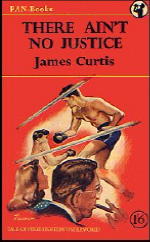
Jimmy Hanley is the star. Later on he became a big name in British TV, or so I’m told, but in 1939 he was still a lad. A good-looking, boy-next-door sort of fellow, maybe not the sharpest guy in the neighborhood, but not the dumbest, either.
In order to win the hand of fair maiden (Jill Furse) he quits his job as an auto mechanic to become a boxer. The money’s better, for one thing, and of course there’s a small bit of fame to go with it, which a cocky young lad wouldn’t mind having, but in 1939, times were tough.
The problem is, well, boxing is a sport not particularly noted for the honesty of the guys running it, and Tommy Mutch’s big mistake is signing up with a promoter as crooked as they come — the kind of guy that gives snakes in the grass a bad name.
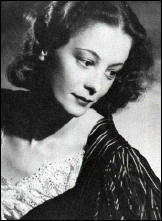
Which is almost, but not quite, all I need to tell you, but I am going to tell you one more thing, and that’s that Tommy’s would-be girl friend sees one boxing match and wants nothing more to do with him nor his new found profession. Even the cockiest guy in the world would find his world upside down, and Tommy is no different from the rest.
Let me insert a word about Jill Furse about here. She’s a frail beauty, a mere wisp of a girl, the kind that some men dream about, not only Tommy. She might have had a long successful career in films, but she didn’t. She appeared a stage play that was telecast by the BBC as a special production in 1938, had a small role in Goodbye, Mr. Chips, also in 1939, this movie, and that was it. She died in 1944 soon after giving birth to her second child. There ain’t no justice, that’s for sure.
In any case, let me end this review by reminding you of the old joke about going to a fight and a hockey game broke out. In There Ain’t No Justice the movies ends with a boxing match in which a fight breaks out. I’ve never seen such a fight, and I’ll bet you haven’t either.
Thu 23 Feb 2012
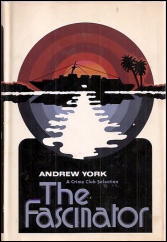
ANDREW YORK – The Fascinator. Doubleday Crime Club, US, hardcover, 1975; Berkley, US, paperback, 1976. First published in the UK by Hutchinson, hardcover, 1975; Arrow, UK, paperback, 1977.
James Bond is not dead. It’s taken me a while to discover it, but Jonas Wilde, with many years of service to British Intelligence already behind him, is the logical successor.
He’s not as flamboyant a character perhaps, but Wilde is very much a deadly adversary, and he possesses quite the same remarkable fascination to women. Trained agents they may be, but soon enough they become sexual objects to be toyed with as well. Fascinating.
Actually he’s retired at the beginning of this one, fed up, torn loose, and lost in the soothing touch of Spanish sangria. A puzzling task presented by Israeli Intelligence under duress reawakens his faculties, however, and when he agrees to become the bodyguard for an Arabian potentate yachting in the Mediterranean, no amount of clever plotting or overwhelming firepower can sway him from the job he was hired for.
He’s an indefatigable one-man task force, but after he’s trapped by an explosion in an underwater cavern with the wounded prince and his number one consort, all you can do is hold your breath during yet another attempt at escape. (B plus)
— Reprinted from The MYSTERY FANcier, Vol. 1, No. 5, September 1977.
[UPDATE] 02-23-12. I did not realize it at the time, but this was the last adventure of Jonas Wilde, or at least the last one that Andrew York, one of several pen names of prolific author Christopher Nicole, wrote up about him:
The Jonas Wilde series —
The Eliminator. Hutchinson 1966.
The Co-Ordinator. Hutchinson 1967.
The Predator. Hutchinson 1968.
The Deviator. Hutchinson 1969.
The Dominator. Hutchinson 1969.
The Infiltrator. Hutchinson 1971.
The Expurgator. Hutchinson 1972.
The Captivator. Hutchinson 1973.
The Fascinator. Hutchinson 1975.
The first of the paperback covers was from Lancer. The others shown were published by Berkley. One of the covers has a #1 on it, suggesting that they were trying to ride the “men’s adventure” bandwagon started with Don Pendelton’s “Executioner” series for Pinnacle. To go along this theory, some of the books have “Jonas Wilde: Eliminator” across the top of the covers.
Wed 22 Feb 2012
THE BACKWARD REVIEWER
William F. Deeck
GEORGE BELLAIRS – Corpse at the Carnival. Gifford, UK, hardcover, 1958. Penguin, paperback, 1964. No US edition.
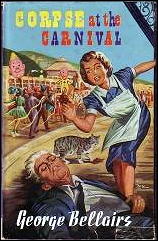
Superintendent Littlejohn of Scotland Yard is flying to the Isle of Man for a vacation with his friend, the Rev. Caesar Kinrade, Archdeacon of Man. Littlejohn had just attended an international police conference in Dublin where he had been asked to lecture on his methods. The other attendees had been shocked to discover he had none.
Nonetheless, the local C.I.D. hasten to get him involved in the strange murder of a man known as Uncle Fred, whose last names were, depending on where he was, Snook, Snowball, and Boycott. Somebody stabbed Uncle Fred, and he died on the Douglas promenade.
This is another boarding-house mystery, with all the oddball characters generated by that locale. Interesting also is the Information about the Isle of Man, which Littlejohn doesn’t get to see enough of.
Despite his lack of method, though, he does discover who killed the multi-named Uncle Fred in a leisurely but fascinating investigation.
— From The MYSTERY FANcier, Vol. 11, No. 1, Winter 1989.
Bio-Bibliographic Data: Quoting from the Fantastic Fiction website:
“George Bellairs is the nom de plume of Harold Blundell, a crime writer and bank manager born in Heywood, near Rochdale, Lancashire, who settled in the Isle of Man on retirement. He wrote more than 50 books, most featuring the series’ detective Inspector Littlejohn. He also wrote four novels under the alternative pseudonym Hilary Landon.”
You’ll also find a list of titles there, along with loads of cover images.
Wed 22 Feb 2012
THE ARMCHAIR REVIEWER
Allen J. Hubin
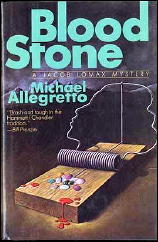
MICHAEL ALLEGRETTO – Blood Stone. Scribner’s, hardcover, 1988. Avon, paperback, 1990.
Michael Allegretto’s second about Denver private eye Jacob Lomax (the first was Death on the Rocks, which I missed) is Blood Stone.
I liked this quite a lot: the narrative moves, the plot is sound, and Allegretto has a nice ear for dialogue. Lloyd Fontaine, a burned-out drunk of a private investigator, asks Lomax for help. Lloyd is he’s still on the trail of millions in jewelry stolen twenty years earlier.
Jake doesn’t take Fontaine seriously — until he finds Lloyd tortured and dead. To complicate matters, Jake’s nemesis in the cops thinks this is the chance he’s long lusted after to put Jake away. The man convicted in the robbery has just been released from prison, and all manner of greedy nasties have gathered for the kill.
You’ll enjoy this.
— Reprinted from The MYSTERY FANcier,
Vol. 11, No. 1, Winter 1989.
The Jacob Lomax series —
1. Death on the Rocks (1987) [Nominated for the 1988 Anthony and Macavity Awards; winner of the Shamus Award for Best First PI Novel]
2. Blood Stone (1988)
3. The Dead of Winter (1989)
4. Blood Relative (1992)
5. Grave Doubt (1995)
Jake Lomax was also in a handful of short stories, including “The Bookie’s Daughter,” which appears in Justice For Hire: The Fourth Private Eye Writers of America Anthology (1990)
Tue 21 Feb 2012
Posted by Steve under
Reviews[2] Comments
REVIEWED BY DAN STUMPF:
JEAN POTTS – The Diehard. Scribner’s, hardcover, 1956. Dell 982, paperback, 1958.
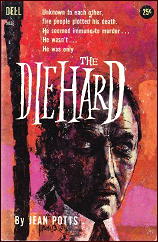
I picked up this book on a whim and found it — well, not completely successful, but such a unique blend of the clichéd and quirky that I suspect it will stay in my increasingly erratic memory long after better books have gone their way.
Before we even start Diehard, we know who’s going to be murdered — I mean that literally, it’s written on the cover: “LEW MORGAN, INEVITABLY, WILL DIE.” Such things are the implicit heart of most mysteries, so I’m not giving away any trade secrets here, but Potts take us on an unusual course: Not “who done it?” but “who will do it?”
Said Lew Morgan is a small-town magnate who owns the local factory and controls the bank—egotistical and insensitive, the archetypal victim-in-a-murder-mystery. His wife has just died, he’s preparing to marry his patient mistress, and his doddering old aunt keeps seeing omens of his imminent death. Now is that a potential corpse or isn’t it?
Not content with creating the quintessential chalk-outline-to-be, Potts provides a cast of supporting characters perched not-too-steadily on the brink of mayhem: embittered daughter, weakling son, envious friend, and an avaricious daughter-in-law with a murderous lover. There’s also a drunken beautician Lew knocked up years ago, then ran out of town, and it seems she likes to get soused and brood over old grudges. You couldn’t find so many suspects outside a CLUE game!
As the story spins out over the course of a day or so, Potts turns the screws, seeming to delight in piling one murder-mystery cliché on another, into an impressive house of carnage. It turns out Lew plans to force his envious friend out of business, then go on a remote fishing trip with him. It also looks like he’s going to ruin his bitter daughter’s one chance for love, publicly disgrace his weakling son, and file criminal charges on his daughter-in-law and her lover. As for the drunken beautician, well, he’s thinking about raising their daughter as his own….
Any one of these would have been (and has been, no doubt) the plot or sub-plot of many a mystery, so perhaps there’s nothing terribly original in The Diehard except Potts’ evident delight in playing with the conventions of the form. I have to say I figured out who-would-do-it long before the end, and somehow I perversely kept hoping the likeable bastard would cheat his fate, but…. Well, read it and see. You won’t be disappointed.
Editorial Comment: Jean Potts, who has fourteen books listed in the Revised Crime Fiction IV, by Allen J. Hubin, is little known today. She was, however, an Edgar winner for her first book, Go, Lovely Rose (1954), and several years later her novel The Evil Wish (1962) was nominated in the category of Best Novel.
Tue 21 Feb 2012
Reviewed by Mike Tooney
JOSEPH COMMINGS – Banner Deadlines: The Impossible Files of Senator Brooks U. Banner. Crippen & Landru: The Lost Classics Series, 2004. Short story collection; hardcover/trade paperback. Edited and introduced by Robert Adey; memoir by Edward D. Hoch.
Banner Deadlines is a fine collection of impossible crime short stories by one of the largely neglected masters of the form.

The back cover blurb explains further:
“Joseph Commings created one of the greatest investigators of locked rooms, impossible disappearances and other impossible crimes — the gargantuan, harrumphing Senator Brooks U. Banner. During his long career (Banner first appeared in the pulps in 1947), he investigated such crimes as murder at a seance where everyone is straight-jacketed together and linked by touching feet, a strange spectre causing death in the middle of a lake, a killing in a sealed glass case, and a murder by a sword which must have been wielded by a giant. The most extraordinary story of all is “The X Street Murders,” in which the victim is shot in a guarded room and the smoking-gun is delivered, a few seconds later, in a sealed envelope next door.”
The bibliography lists thirty-two stories featuring B.U.B., so fewer than half are here: 14/32 = 43.8 percent. One hopes that Crippen & Landru can get more published in the future.
An aside here about character credibility: In the days before ubiquitous television coverage, it seems possible that a person with Banner’s eccentricities of speech, dress, and behavior — not to mention that he does seem to spend an inordinate amount of time in pool halls handily defeating his opponents rather than working on the nation’s business — might indeed have enjoyed a long political career … but, then again, we are talking New York politics, right?
In his introduction, Robert Adey informs us: “In the early Banner adventures the cases brought to him, or over which he often seemed to stumble with an almost audible crash, were of the classic impossible crime variety, stuffed to the gills with locked room lore and traditional golden age ambiance.”
Furthermore, Commings’s “middle period stories contain puzzles which are just as ingenious as those Joe wrote for the pulps, and Banner is as keen in the chase and as stunning in his solutions as ever he’d been.”
Adey concludes, “If your tastes in detective fiction run to ingenious puzzles, locked room murders and atmospheric settings, then look no further. Allow us the pleasure of introducing a writer (one of the very few) whose flair and inventiveness in the construction of impossible crime problems place him fairly and squarely alongside those Golden Age maestros John Dickson Carr, Clayton Rawson and Hake Talbot, and a detective who, by virtue of his personality, eccentricity and ingenuity, stands comparison with Dr. Fell, Sir Henry Merrivale and the Great Merlini.”
Mike Grost also discusses Commings’s stories on his website here.
The Stories:
1. “Murder Under Glass” (1947). “I suppose you’ll tell me that you know a way that a murderer can go through solid glass without leaving a scratch on it.”
I’m working on it,” said Banner.
Comment: A rich man is murdered in a locked room made of glass (yes, you read that correctly). Characters speak in forties-style slang. The story is flecked with many short but effective descriptive passages that limn the characters’ personalities.
2. “Fingerprint Ghost” (1947). “If you wanna solve these murders, Archie, you gotta grab every opportunity.”
Comment: Murder right in the middle of a seance. Without wearing gloves, the killer uses the same knife that killed someone else and leaves no fingerprints. Like “Murder Under Glass,” the motive for the second killing is deeply embedded in the first crime.
3. “The Spectre on the Lake” (1947). “The way you tell it a phantom killer with a phantom gun crossed all that water without making a splash, got into the boat, shot both men dead, then went off the same way it came.”
Comment: Banner is an eyewitness to murder, but even he can’t positively identify the killer — and where did the weapon go? Perception — and the speed of sound — are everything.
4. “The Black Friar Murders” (1948). “As a general rule, wimmin ain’t the stabbing kind; they prefer poison and other mild things that corrode a fella’s carcass by small degrees. That’s why we call ’em the gentler sex.”
Comment: Banner gets invited to Thanksgiving dinner and is embroiled in a double murder. Quite atmospheric, and the story moves at a good clip.
5. “Ghost in the Gallery” (1949). Seeing the hanging corpse, Coyne crossed himself religiously and exclaimed, “Tis the divvil hisself!”
Banner scowled. “No. Just a poor sap with buck teeth.”
Comment: How do you kill Satan? Asians devised a method long ago, and it’s employed here. Banner’s solution is, well, elementary: “Every schoolboy knows that the angle of reflection is equal to the angle of incidence.”
6. “Death by Black Magic” (1948). “He was strangled,” repeated Banner grimly. “While I sat there watching….”
Comment: Murder in a haunted theater, but the “ghost” is real enough. This is a clever re-working of Othello, right down to the motives. Call it a “locked-theater problem.”
7. “Murderer’s Progress” (1960). “The bullet found in Wheaton’s head was fired from the gun left behind at the club. Then Wheaton was murdered with the gun while it was in my pocket!”
Lutz said wryly: “Have you got an aspirin?”
Comment: A game that goes fatally wrong, but Banner is up to the task. Envy and chess do not mix. As sometimes happens with Commings, two murders intertwine.
8. “Castanets, Canaries and Murder” (1962). “Not as much as a fly could have crawled across that space without being seen! How did a normal-sized murderer do it?”
Comment: The Invisible Man commits a murder, and dead canaries, a volatile movie star, carrier pigeons, and a lens all figure in it. Banner’s simple technical solution reveals hidden motives.
9. “The X Street Murders” (1962). McKitrick sighed. “Times are getting brutal for us investigators when all a murderer has to do is send his victim a gun by mail and it does the killing for him.”
Comment: Probably Commings’s most famous story. International espionage leads to two murders, the first one a marvel of intricacy and timing. An interesting variation on Christie’s “The Dream.” The author expands his catalogue of Banner descriptions, giving him “the physique of a performing bear” and comparing Banner to “an overgrown Huck Finn. Physically he was more than one man — he was a gang.”
10. “Hangman’s House” (1962). “If it’s suicide,” he said, “how did he cross thirty feet of floor without leaving any marks in the dust? How did he get the rope tied to that high chandelier when there’s nothing in the house to stand on? And if he jumped from the chandelier, he wouldn’t have been strangled — his neck would have been broken!”
“Brother,” said Banner, scowling, “you said a mouthful.”
Comment: Death, wearing a mask, vows revenge, and eleven years later exacts it. Banner is trapped with several others, one of them a murderer, who “will never forget the battering rain, the broken Mississippi levee, the thousand dancing candles, and the fifteen feet of rope.”
11. “The Giant’s Sword” (1963). Banner understood her. He understood people and he understood murder. Those were tears of frustration and anger. Whatever the reason for her grief, she wasn’t sorry to find Mark dead.
Comment: A most unusual murder method. One might say the victim was involved up to the hilt … and who knew that how much mileage a Volkswagen gets could prove so crucial to the solution of any crime?
12. “Stairway to Nowhere” (1979; with Edward D. Hoch). “Whuzzat? Oh, you mean a letter laying out in plain sight is overlooked.” Banner made clucking noises. “Nope. I never believed that theory. It’s a lotta bunk. If you’re hunting for a letter, you’ll examine every one you see. As for hidden bodies…”
Comment: A young woman disappears, as does a precious stone, and of course the two events dovetail. The crime here is something of a departure for Commings, as is the narrative viewpoint. The point-of-view character is not Banner but a young man emotionally involved with the missing lady. We are privy to his thoughts, not the senator’s.
13. “The Vampire in the Iron Mask” (1984). Banner paused… “I’ ll confess that this’s the first time I’ve found the solution to a murder by reading it in a magazine. Hah!”
Comment: This one, with its sepulchral atmosphere and intricate jiggery-pokery, is ALMOST as good as John Dickson Carr on one of his off days. Nevertheless, the plotting is first-rate and the setting, essential to character motivations, is well employed.
14. “The Whispering Gallery” (2004). “The weapon wasn’t held in the normal position at all. The guy with the gun must have been nine feet off the floor — and upside-down!”
“Police headquarters!… Send some boys over to Cagliostro Court to hunt for a man who’s missing in his own house.”
Comment: When a spiritualist debunker vanishes, a few people hovering around are highly motivated to see him stay vanished. A 3,000-year-old papyrus, a portrait with a bullet hole, a pack of tarot cards, a suave magician, an under-age bride, an albino policeman, and a body frozen in ice all figure in the mix.
Banner sorts it all out while practicing his own peculiar brand of magic. This is “the first publication — ever — of this story, one of only two previously unpublished Banner short stories of impossible crime.”
Mon 20 Feb 2012
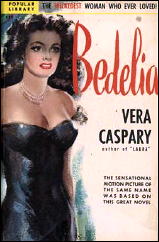
BEDELIA. British National Films, 1946. Margaret Lockwood, Ian Hunter, Barry K. Barnes, Anne Crawford, Beatrice Varley, Louise Hampton, Jill Esmond. Co-screenwriter: Vera Caspary (with Herbert Victor and Isadore Goldsmith) based on her novel of the same title. Director: Lance Comfort.
I’m not sure if anyone could review this film without giving away more of the plot than you’d like to know – certainly more than I’d care to read myself – so take this as a [WARNING] that there’s a good strong possibility I may cross some sort of line you’d rather not have crossed, as far as you’re concerned. (Personally I like to know as little about a movie I’m watching or a book I’m reading as I can get away with.)
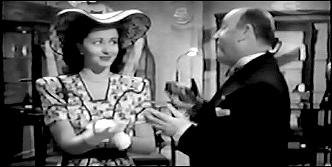
In one sense this is a straightforward and relatively minor crime novel, but if you have the chance to see this movie, I am willing to wager that you will agree that this is not so.
We quickly learn that Margaret Lockwood’s character has just married Ian Hunter’s character, Charles Carrington. She’s young and beautiful; he’s an older, well-established type. Not exactly rich, but well enough off that we quickly know why she married him, or we think we do.
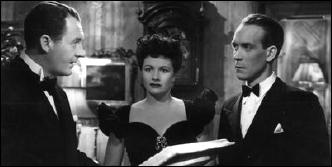
Following her (and then them) around during their honeymoon in Monte Carlo with unknown intentions, however, is Barry Barnes’s character, Ben Chaney (on the right), insinuating himself into their life first with a small dog, then as an artist who’d like to paint her portrait. (She, Bedelia, does not like to have photographs of herself, but agrees to sit for Chaney to please her new husband.)
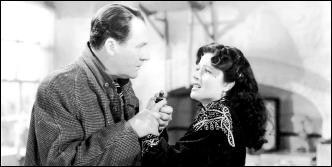
We’d like to know that Bedelia is innocent of any wrongdoing, since Chaney’s persona is that of a sneaky weaselly sort of fellow, but she is far from convincing in the falsehoods she tells, and we fear the worse, even back in England when Charles needs to get back to work, where he’s assisted (and more than likely, secretly loved) by his secretary Ellen (Anne Crawford).
Straightforward enough, as I said up top, but there is also a strange undercurrent going on in this movie. Eventually Bedelia’s lies catch up to her, but who will her husband believe? Bedelia, or the artist who’s also living under false representation?
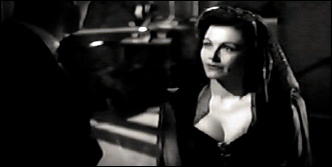
If you don’t sense what’s not precisely stated in the story line, you probably won’t make much of this movie, translated from Connecticut in 1913 in the book to England perhaps 25 years later. (The manor house snowed in during a storm makes one think of the standard cliche of the Golden Age of Detection, but no, that’s not the kind of mystery this movie is.)
But there’s more to the story than exactly meets the eye, and as I said in my opening remarks, I hope I haven’t said more than I should have. And to their discredit, the other reviews I’ve read on this movie have almost always said more. I’m glad I didn’t read them before I watched the movie for myself. I enjoyed it.
Note: To watch the first eleven minutes of the film, check out this YouTube clip here.
Mon 20 Feb 2012
Posted by Steve under
Reviews[7] Comments
KRIS NERI – Dem Bones’ Revenge. Worldwide, paperback reprint, August 2003. Hardcover edition: Rainbow Books, 2000.
Humor is a funny thing. I can’t believe I really said that, but it’s true. Take this book for example. Mystery novelist Tracy Eaton and her totally dysfunctional entourage of family and friends are wacky beyond belief, with wise quips and comical situations coming non-stop and never-ending.
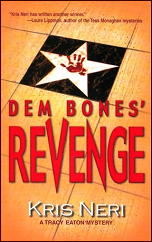
Sitcom stuff and awfully silly, but you’re thinking that you need examples. Here goes, and remember, you asked. Tracy’s mother (and former Hollywood movie queen) has just been arrested in connection with the murder of the plaintiff in a plagiarism suit that Tracy’s straitlaced lawyer husband Drew is defending. From page 18:
I jabbed my finger at the vast opening in the lane before the hood of Drew’s sedate brown Volvo sedan. “See that space? That’s nature’s way of telling you to move ahead.”
He pursed his lips in consideration, but lacking the thirty-four car-lengths Drew requires for safety, he scarcely budged. I wanted to belt him.
Clueless, he glanced my way and asked, “You’re upset about your mother, aren’t you?”
“Don’t be silly,” I snapped. “Why would you say that?”
“You always criticize my driving when you’re worried.”
That couldn’t be true. I wasn’t worried, not really. Drew just drove like my Aunt Fanny — and she’d spent the last five years in a coma.
Still, it wasn’t like Mother to cry uncle. That woman can talk her way out of a bear trap. And nobody could seriously consider her as a murder suspect. While she prided herself on breaking most of life’s rules, she’d never included the one that forbids bumping off cute old guys who file bogus lawsuits.
Between a contractor’s handyman who specializes in knocking holes in walls; Drew’s uncle Philly, a kindly old con-man whose short visit seems have lengthened into a lifetime stay; and an editor who thinks Tracy’s most recent novel needs massive changes, and in only two days time — not to mention her mother — Tracy’s life is filled to the brim.
And continuing on from the excerpt above, L.A. is definitely a land in which to drive (or not). From page 19:
[Drew] glared into the rearview mirror at a car that blocked him out of that lane. That’s what happens when you let other drivers in on your plans. Fortunately, he had me along to flip that driver the universal symbol of displeasure.
From page 60: I twisted the wheel into another U-turn, this time not in a traffic break. Well, that’s why cars have brakes — those drivers leaning on their horns should thank me for testing theirs.
From page 61: I drove home in a daze. A menace behind the wheel, stopping at green lights, running reds, like I’d never read the DMV manual. Come to think of it, I probably never had.
You see what I mean. I happen to think it’s forced, but it is funny. But I couldn’t get much past Chapter Ten, and I’m going to tell you about it. Tracy has (um) traced her mother, who has mysteriously disappeared, to an isolated warehouse. Poking her head inside, she’s clobbered over the same, and the next thing she knows, she’s locked in a room with her mother, both of them prisoners.
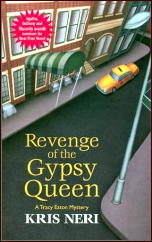
A room with a small pot for necessary purposes, and a slot in the door for food to be shoved in. And as it happens, a small locked storage chest. Tracy happens to still have her keys, and one of them just happens to be able to open the chest, which happens to contain long ropes, which happen to be long enough to reach the overhead skylight, which happens to be open, and Tracy’s mother happens to have been in enough western movies to lasso the latch, and Tracy happens to have included rope-climbing in her gym classes, and (as it happens), they’re free again.
Now. Does Tracy happen (sorry) to ask her mother what she was doing there? No. Does she inquire as to who it was that kidnapped them and was shooting at them as they made their getaway (disguised as prostitutes, so that a passing cop car might stop and give them a lift)? No. Does Drew’s Uncle Philly, who saw Tracy’s mother being captured in the first place, mention it to anyone? No. On page 118, he finally admits: “I froze, kid. I left her there.”
Tracy reflects on this (page 119): Even if it was my mother he threw to the wolves, I couldn’t blame him. We are what we are.
That was it. Except for skimming, this is as far as I went, even though it appears I’m in a minority here. Neri’s previous book in the series, Revenge of the Gypsy Queen, was nominated for the Agatha, Anthony, and Macavity awards.
Mystery writers Laura Lippman, Parnell Hall and Meg Chittendon have words of praise on the cover of this. At the present moment, there are eight reviews of this book on Amazon, and in terms of stars, all eight give it five out of five.
I don’t give stars any more, but if I did, the best I could do is one and a half. We are what we are, and what I am is puzzled. If not dumbfounded.
The Tracy Eaton series —
1. Revenge of the Gypsy Queen (1999)
2. Dem Bones’ Revenge (2000)
3. Revenge for Old Times’ Sake (2010)
[UPDATE] 02-20-12. I read this through just now before posting it for the first time since I wrote it, and I’ve come to the following possible conclusions, not mutually exclusive: (a) I was not having a good day, (b) I was not one of the intended readers for the book, (c) I didn’t know what I was talking about, or (d) humor really is a funny thing.
Sun 19 Feb 2012
A TV Series Review by Michael Shonk
BOLD VENTURE – Syndicated, 1958-1959. 39 episodes at 30 minutes each. Ziv Television Production. Cast: Dane Clark as Slate Shannon, Joan Marshall as Sailor Duval, Bernie Gozier as King Moses. Written and produced (*) by David Friedkin and Mort Fine. (*-except when Friedkin directed then Fine got solo Producer credit).
For my earlier review of the Bold Venture radio series, go here.
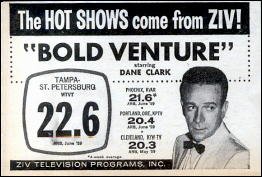
While most believe the television series began in 1959, it was more likely November 1958. According to Broadcasting (November 17, 1958), Bold Venture had been sold in 58 markets (including Chicago) in the first ten days of its release. The copyright dates for the episodes I have seen were from 1958 or 1959.
TV’s Bold Venture, as the radio series, told the story of Slate Shannon and his ward Sailor Duval. But there were major differences. The action moved from Havana Cuba to Port of Spain Trinidad, where Slate owned the hotel “Shannon’s Place†and used his boat “Bold Venture†for odd jobs. The series changed from the radio show of mystery and intrigue to a typical TV crime show.
David Rose was not involved with the TV series and the clever weekly songs King Moses sang in the radio series virtually vanished from the TV series. The theme changed from the radio’s basic adventure show theme to the TV’s theme featuring calypso drummers.
With TV-Film still in its crude stages, and budgets allowing little for music, sets and locations, Bold Venture had that cheap look and soundtrack common with 50’s syndicated Ziv Productions.
Dane Clark is best known for his supporting roles in WWII films such as Action in the North Atlantic (with Bogart). In the fifties he starred in a series of short-lived TV series, Crime & Peter Chambers, Justice and Wire Service. He was later also a regular in The New Adventures of Perry Mason.
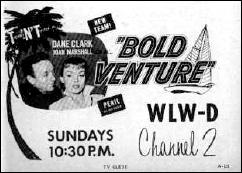
Clark lacked the charm and talent of Bogart who had made Slate a good man in love with a much too young woman. Clark turned Slate into an unlikeable, self-centered, womanizing jerk, who was often heartlessly cruel to Sailor.
Joan Marshall began her career as an underage chorus girl in Chicago. While Bold Venture was her only regular cast role in a series, she did a variety of memorable guest roles (Maverick, Jack Benny, Star Trek, I Spy).
Marshall did her best with what the TV series turned into a thankless part. Her biggest flaws were she was not Bacall and looked too mature to be a “ward.â€
The complete lack of chemistry between the two stars was never more obvious than during the cute tag scene at the end focusing on Slate and Sailor’s relationship.
David Friedkin and Mort Fine were writing partners for many series including Frontier, I Spy, and The Most Dangerous Game. Friedkin also enjoyed directing and won the Director Guild award in 1961 (Dick Powell Theatre) and 1975 (Kojak). Both Friedkin and Fine won the Writers Guild award in 1964 for The Pawnbroker.
Friedkin and Fine wrote both the radio and television versions of Bold Venture, and recycled radio scripts for the TV series. Oddly, nearly every change for the TV series was for the worse.
In the radio version of “Slate’s Old Flame,” a woman Slate had loved in the past returned. The story focuses on Slate and Sailor’s relationship. Sailor pushes Slate to get rid of the old lover until Slate, confused over what he wants, dumps Sailor. Sailor leaves Slate and, shades of To Have and Have Not, becomes a singer at a nightclub.
The old flame and her current lover plan to frame Slate for the murder of her husband. Slade and the husband fight. The old flame convinced Slate he has killed the husband (he was in a coma and survived). Slate goes on the run and hides out with a friend. Slate learns the old flame has put a reward on his head, and knows his friend will betray him given the chance.
Hearing Slate is on the run, Sailor returns to help him. She knows where he is, and when she arrives, Slate tells her how much he needs her. Together they defeat the old flame.
The TV version (with Karl Swenson as a guest star and directed by Walter Doniger) has lovestruck sucker Slate go out on a date with the old flame and fall for her without much thought of Sailor. Slate is knocked out and convinced he shot and killed the husband.
Slate goes on the run to his best friend forever that he had never mentioned before. Instead of the romantic drama between Slate and Sailor, the TV version focused on the relationship between Slate and best friend forever. When the best friend forever learns of reward he decides to betray Slate. The two fight.
Sailor knows where he is, when she arrives, Slate yells at her. Slate is off to confront old flame and orders Sailor home. Slate defeats the old flame.
The following are TV episodes I have seen (titles are unofficial unless marked with **).
“Back from the Dead.” Directed by Anton M. Leader. Guest Cast: Robert Strauss. Ex-soldier, who blames Slate for his capture during the war, arrives seeking revenge.
“Blue Moon.” Directed by David Friedkin. Guest Cast: Stacy Harris. In the radio version, a neighbor asks Slate to rescue his innocent daughter from a blackmailing gambler who won’t let her leave his ship. The TV version has neighbor ask Slate to get his daughter off a gambler’s ship, but the 50’s bad girl daughter doesn’t want to go. Slate refuses to stop because the gambler made him look bad. Several die in a lame gunfight so Slate can get his way.
“Deadly Merchandise.” Directed by David Friedkin Guest Cast: Jack Kruschen. The TV version simplifies the radio version, reducing the number of characters. Woman hires Slate and the “Bold Venture†to pick up a delivery at sea. There is a double cross, Slate gets his weekly beatings, confronted by a pistol-packing poet, and stuck in the middle of a possible revolution.
“Fast Trip to Venezuela.” Directed by Bernard L. Kowalski. Guest Cast: Denver Pyle. Slate tries to help and old friend and his companion, a daughter of an overthrown island leader, to escape to Venezuela.
“Feathered Cape” (**). Directed by John Rich. Guest Cast: Ned Glass. Slate helps old friend get revenge against the friend’s ex-treasure hunting partner.
“Matador” (**). Directed by David Friedkin. Guest Cast: Billy Barty. Slate is blamed for the death of a Matador, who dies in “Shannon’s Place†with a crush on Sailor.
“Missing Tourist.” Directed by William Conrad. Guest Cast: Phillip Pine. A worried guest comes to Slate and asks him to find her husband. Slate blunders around and gets kidnapped. Lots of fighting, not much thinking.
“Murder on the Beach.” Directed by Gerald Mayer. Guest Cast: Michael Pate. Sailor finds a murdered body on the beach, placing Slate up against a local businessman.
“The Search.” Directed by William Conrad. Guest Cast: Dennis Patrick. Three men trick Slate and Sailor to take them to some stolen money.
“Vanishing Fiancée.” Directed by Bernard L. Kowalski. Guest Cast: DeForest Kelley. A rich man asks Slate to find his fiancée, who had disappeared during dinner at a popular nightclub.
NOTE: Television Series & Specials Scripts, 1946-1992 (McFarland, 2009) features a list of fifteen Bold Venture scripts, all but two were written by David Friedkin and Mort Fine. The other two were written by Don Brinkley (Oliver’s Twist) and E. Jack Neuman (Kazantos).
Sun 19 Feb 2012
Posted by Steve under
Reviews[8] Comments
REVIEWED BY RAY O’LEARY:
REGINALD HILL – Bones and Silence. Delacorte, hardcover, 1990. Dell, paperback, 1991. First published in the UK: Collins Crime Club, hardcover, 1990.
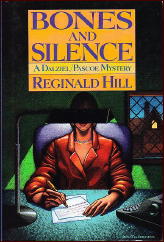
After a night on the town, Superintendent Andy Dalziel witnesses a shooting in the house across the way from his kitchen window. Though he’s sure what he saw was murder, the Law will not prosecute solely on the testimony of a drunken policeman, and the two surviving occupants of the house — the husband and lover of the deceased victim — both insist she was killed accidentally while they were trying to prevent her suicide. Then one of them disappears.
Meanwhile, Dalziel has been getting anonymous notes from a woman threatening to kill herself, and been finagled into playing God in a series of Medieval Mystery plays staged by the newly-appointed Director of the Civic Theater, a lovely Eurasian.
Just another routine Hill effort, his “routine” consisting of fully realized characters, sly wit and an engaging plot, well told. Bones and Silence is over 300 pages long, but Hill manages to pull off one surprise after another, right up to the end.
At which point (right up to the end), I suddenly realized what the relationship between Dalziel and his chief underling, Chief Inspector Pascoe, reminded me of: Check out Mayor Skeffington and his nephew in Edwin O’Connor’s The Last Hurrah (Spencer Tracey and Jeffrey Hunter in the faithful film) and see if you don’t find some remarkable similarities, even down to Pascoe/Hunter’s wife.
« Previous Page — Next Page »




